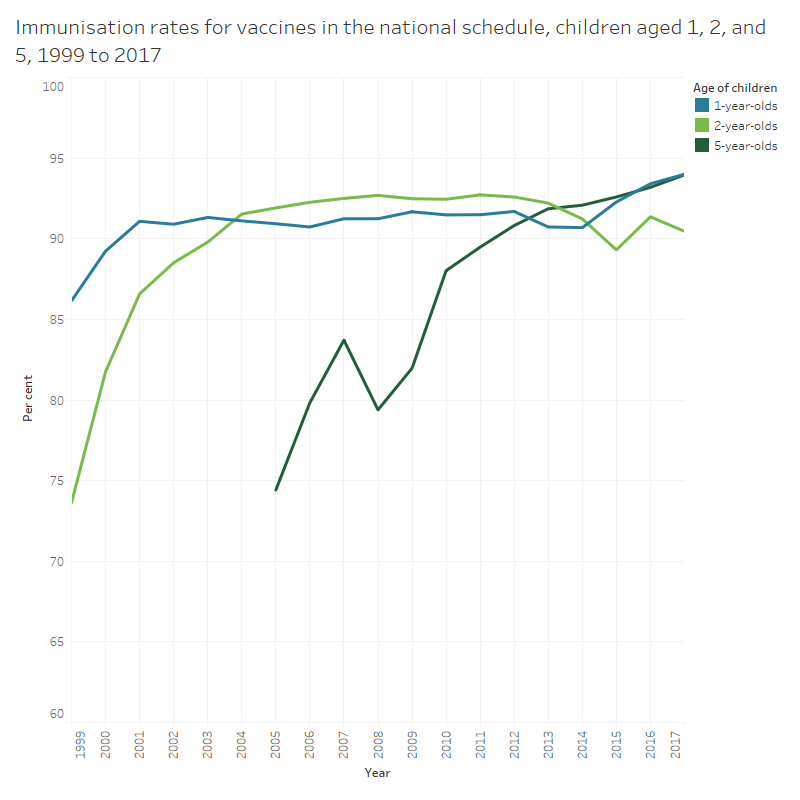Immunisation rates for vaccines in the national schedule (children)
Definition: The proportion of 1-, 2- and 5-year-olds who have been assessed as fully immunised according to information recorded in the Australian Immunisation Register.

Source: Australian Immunisation Register; Table S1.4.23.
- The immunisation rate for 1-year-olds increased between 1999 and 2001, then remained relatively stable to 2012. A slight fall in the rate for 2013 and 2014 is likely due to the addition of vaccines in the national schedule in this period. The rate increased again from 2014 to a 94% in 2017.
- For 2-year-olds, the immunisation rate increased markedly between 1999 and 2004 (from 74% to 92%), and remained relatively stable at 92% to 93% until 2013. The rate fell to 89% in 2015, rose again to 91% in 2016, but fell to 90% in 2017. Additional vaccines were included in the national schedule in late 2014 and 2017 which most affected the rates over this period.
- The rate of full immunisation for 5-year-olds increased from 74% in 2005 to 94% in 2017.
- In 2017, the immunisation rate for 1- and 2-year-old Indigenous children was lower than the rate for all children of the same age (92% compared with 94%, respectively, for 1-year-olds and 88% compared with 90% for 2-year-olds); but the immunisation rate for Indigenous 5-years-olds was higher than the rate for all children (96% compared with 94%).
- A human papillomavirus (HPV) vaccine is included in the national schedule for adolescents. The HPV immunisation rate for 15-year-old females rose from 72% in 2012 to 79% in 2016, and from 62% in 2014 to 73% in 2016 for 15-year-old males.
For more information, see Chapter 7.2 'Immunisation and vaccination'.


